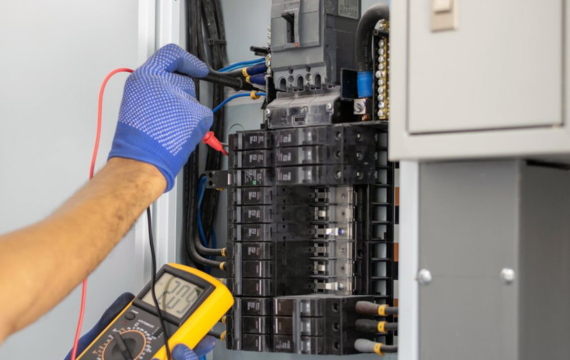Like any other electrical equipment or accessory, at some point, your circuit breaker will fail.
For that reason, you will be forced to replace it.
But, when can you know that the circuit breaker is about to fail or is in bad condition. Well, we are going to explore some common signs that your circuit breaker may require replacement:

1. Frequent Tripping
When yourbreaker goes off constantly when you keep turning it on, it is referred to tripping.This is usually the case when a number of appliances are connected to the breaker or when there is a short circuit of some nature. A bad breaker for instance cannot regulate electricity; it keeps on going off.
When you connect too much appliances, poor wiring, or bad breaker then you will experience this issue. This needs to be fixed by redistributing the load, checking for wiring complications, or fixing the breakers.
2. Breaker Won’t Reset
If a circuit breaker will not reset, then it could be faulty and would need to be replaced at the next opportunity. However, in a faulty breaker, if there is tripping, then this equipment will not stay in the “on” position. This suggests an internal issue or a continuous electrical malfunction within the car.
It could be attributed to a short circuit that is continually present, a severe overload, or even internal damage to the component. They should look for underlying issues and possibly change the breaker.
3. Physical Damage
Look for apparent signs of physical abuse, such as burnt black marks, a burnt smell, or melted plastic on the breaker. Such signs suggest that the breaker is either overheated or has a fault internally and, therefore, unsafe to use. Physical damage caused by bad circuit comes from short circuit. Handling this requires intervention in the shortest time possible, possibly having the damaged breaker changed to avoid more dangers.
4. Age of the Breaker
Older breakers may be worn out and may not be efficient in their operation as expected. With time, usage degrades components or materials constituting parts, which makes them vulnerable to failure. They should be inspected and maintained on a regular basis.
Some of the reasons for failure in older breakers include deterioration of materials used, obsolescence, or gradual wearing out resulting from extended usage. Changing the old breakers with new ones helps in improving the state of safety and reliability.
5. Warm to the Touch
A bad circuit will most likely emit heat which you might feel as warm to touch. This may be due to overload, internal damage, or poor connections that may be present in the system. Pervasive warmth requires immediate action and possibly replacement.
Some of the reasons that might be behind this are loose wiring, excessive load on the circuit, or a faulty breaker. This is usually done by checking the connections, lowering the load, or replacing the breaker in most cases.
6. Unusual Noises
Different sounds, such as buzzing or humming noises coming from the breaker box, are signs that should not be ignored. These sounds are due to electrical arcing or internal problems, meaning the breaker is most likely faulty and should be checked or replaced. Possible reasons may be poor contact between the wiring and the breaker, a defective switch, or excessive usage of a single circuit. These noises should be corrected as soon as possible to avoid other electrical issues arising.
7. No Power to Outlets
If some outlets or appliances are dead or non-functioning when the switch on the breaker is supposed to be ‘on,’ then the breaker may be damaged. This suggests that there is an issue where the breaker interrupts the flow of electricity.
There are various reasons for such problems, ranging from internal damages, loose connections, or even a problem with the breakers. Check and possibly replace the breaker to regain power as well as safety.
8. Faulty Test Button
Many breakers will contain a test button that you can use to make sure that the breaker is working correctly. If the test button is not pushing the breaker, then it is faulty and cannot offer the required safety measures.
This could be due to physical injury, usage, or there might be a possibility of a defect during the manufacturing process. Replacing the breaker makes sure that it will be able to trip when the need arises so as to enhance electrical safety.
Conclusion
It is important to replace your circuit breaker in time to avoid possible power outage. Besides, in extreme situations, a bad circuit breaker may cause electric spark that may cause fire.
More importantly, only buy your circuit breaker from trusted manufacturers.
How often to Circuit Breaker go Bad – Source: KDMFAB
DC Circuit Breaker – Source: KDMSTEEL
Static Circuit Breaker – Source: KDMSTEEL




